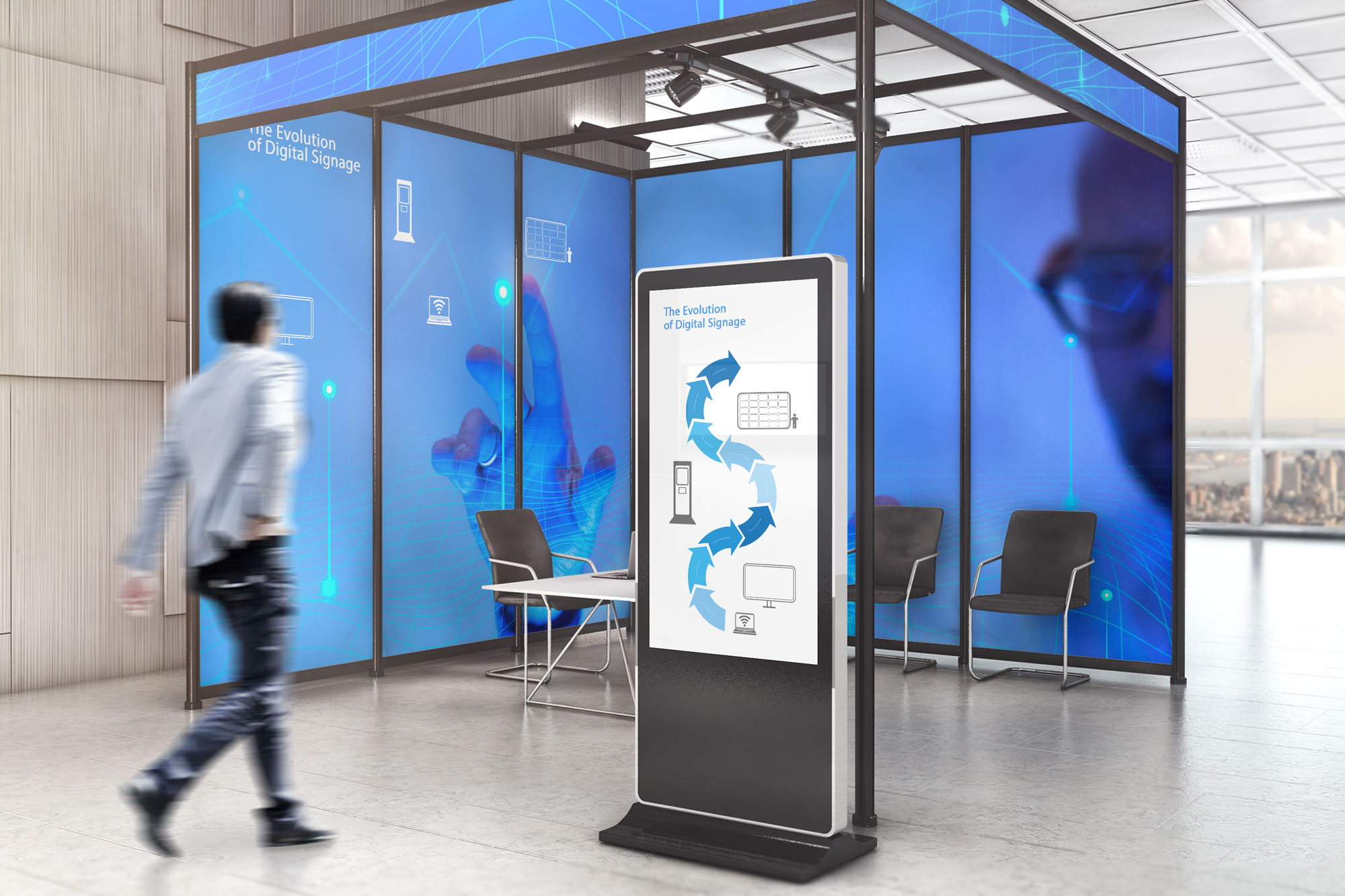The largest pro AV technology show in the world – Integrated Systems Europe (ISE) – was run recently in Barcelona, Spain, and if you didn’t go, but paid attention to social media and trade coverage, you might have concluded that there wasn’t much new.
Well, there was.
The more accurate description – at least in the context of digital signage – was that exhibitors demonstrated and discussed a lot of improvements and enhancements to their existing or expanded products and services. Lots and lots of hardware and software is a little better, a little easier to use, maybe faster, maybe brighter or maybe lighter.
In regards to digital signage market trends, the phrase that gets used a lot is evolution, versus revolution. Existing stuff was improved in some way, versus new, never-before-seen stuff scattered around a show floor.
Digital signage technology is like most technology. There are periodic major leaps forward, but most years the advances are subtle. The jaded souls who wander trade show floors and exchange notes with like-minded people – agreeing there was not much new – are overlooking how just about every vendor at these kinds of events comes with new things to talk about and, in many cases, to demonstrate.
Some of it may appear boring, like Philips introducing a remote device management platform for its line-up of smart displays. Software tools for managing networks don’t get people excited like giant video walls, but they’re incredibly important to maximizing uptime and minimizing field service costs.
Some of it may appear to be the same old thing – like LG showing its LED on transparent film. Observers may say LG has been showing that for years, but they’re not acknowledging that the tech keeps getting better in terms of color support and clarity. Turning windows and glass divider walls in retail and workplaces has a lot of potential if the glass surface can remain truly transparent. LG is not the only company with this technology, but they’re by far the largest and best known.
There was a small German company at ISE demonstrating a new kind of focused audio. That’s again something that’s been around in various forms for many years, but it’s also something that keeps getting better. Imagine being able to pair digital signage video messaging with supporting audio, but only in very specific zones. Walk into the zone and you hear it. Take three steps left or right, and nothing.
There were companies at ISE talking about AI. Others talking about no code software. Voice interaction is getting smarter. Touch keeps improving.
And the display companies continue to push the possibilities with their screens – whether they are LCD, OLED, QLED, LED, miniLED, microLED or some new acronym. The engineers who develop display hardware love their acronyms.
For a long time, the battle at trade shows was about size and form factor of screens. But flat panel displays have just about maxed out in terms of size – because of the way they’re made – and LEDs are not constrained by size. You don’t buy a 30 foot wide by 10 foot high video wall SKU. You stack and tile units to whatever scale and shape needed.
So manufacturers are competing as much or more now on subtleties like color reproduction and refresh rate. They are specs that might not mean that much to non-technical people, but you don’t need an engineering degree to see screens that look amazing and others that don’t.
Much of what was at ISE will be at Infocomm in early June in Las Vegas. The two are sister shows. There are some European companies that may not have a presence, just as there are some North American companies that did not set up in Barcelona. But the story will be the same.
There will be much to see – obvious and subtle. If people go expecting to see the next big thing – like OLED or premium microLED – they may be disappointed. But if they go with the idea that much of what they already know will have been refined, enhanced and generally made better, they’ll have lots to see and learn.
